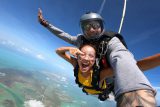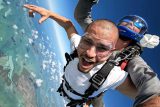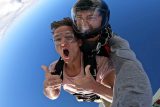The History & Evolution of Skydiving Video
Skydiving
Posted by: Skydive Key West
10 months ago
Imagine leaping from an airplane and feeling the rush of adrenaline and wind as you plunge into the great, blue skies. Now, imagine capturing it all on camera – that’s the thrilling life of a skydiving videographer! From its humble beginnings with bulky, hand-held cameras, to today’s sophisticated helmet-mounted setups, the evolution of the skydiving video is nothing short of spectacular.
In this article, we’ll explore the unique artform of skydiving videography. How did early videographers hold onto cameras while falling at over 100mph? How did skydiving tandem videos even become a thing? Let’s dive in!
1960s: The Dawn of Aerial Photography
The 60s was a time of infancy for skydiving photography. The earliest images were taken from the aircraft or ground, not the sky, but they still provided a thrilling glimpse into the skydiving world, catalyzing interest in the sport. Eventually, people became so hungry to share the exhilaration of skydiving, they began strapping on cameras from old machine gun sights and jumping with them!
This video by British Skydiving fabulously delves into the nitty gritty specifics of photographic history in the realm of skydiving and aviation.
1970s: Technological Advancements
Carl Boenish – a HUGE pioneer for the BASE jumping community and an American cinematographer – filmed the first jumps from El Capitan. Boenish was the first to craft and use “camera wings” – a modification of a skydiving jumpsuit that allows the jumper to easily slow their fall rate to keep up with large formations (or tandem skydivers)!
In the early 70s, people were strapping large cameras to their helmets to get those awesome freefall shots, but still having to use a manual switch that was handheld. This presented some obvious challenges, as using your hands during the skydive is critical to communicate with others, maintain stability, and deploy the parachute.
The mid-1970s saw some significant advancements in the art of skydiving, and people wanted to document it. This period is known for people trying crazy jumps and testing the preset parameters of the sport – proving what humankind, a plane, and parachute could really do! This “push your limits” mentality is something skydivers still healthily hold.
1980s: Increased Popularity and Innovation
The use of VHS recorders became prevalent in the 80s, bringing the sport a leap closer to where it is today. VHS allowed jumpers to record longer and better quality footage. According to a Parachutist Magazine article from 1981, “Video can show a student now what went wrong – or right – with the last jump.” This is a teaching method we still use today!
Sony Beta Movie (released in 1983) was the first camera system that was all one package: recorder, optics and lens, batteries, etc. – a skydiver’s dream! This system used a glass tube, called a cathode ray tube, to capture and process images. These were inherently fragile, posing potential issues for those using them for extreme sports.
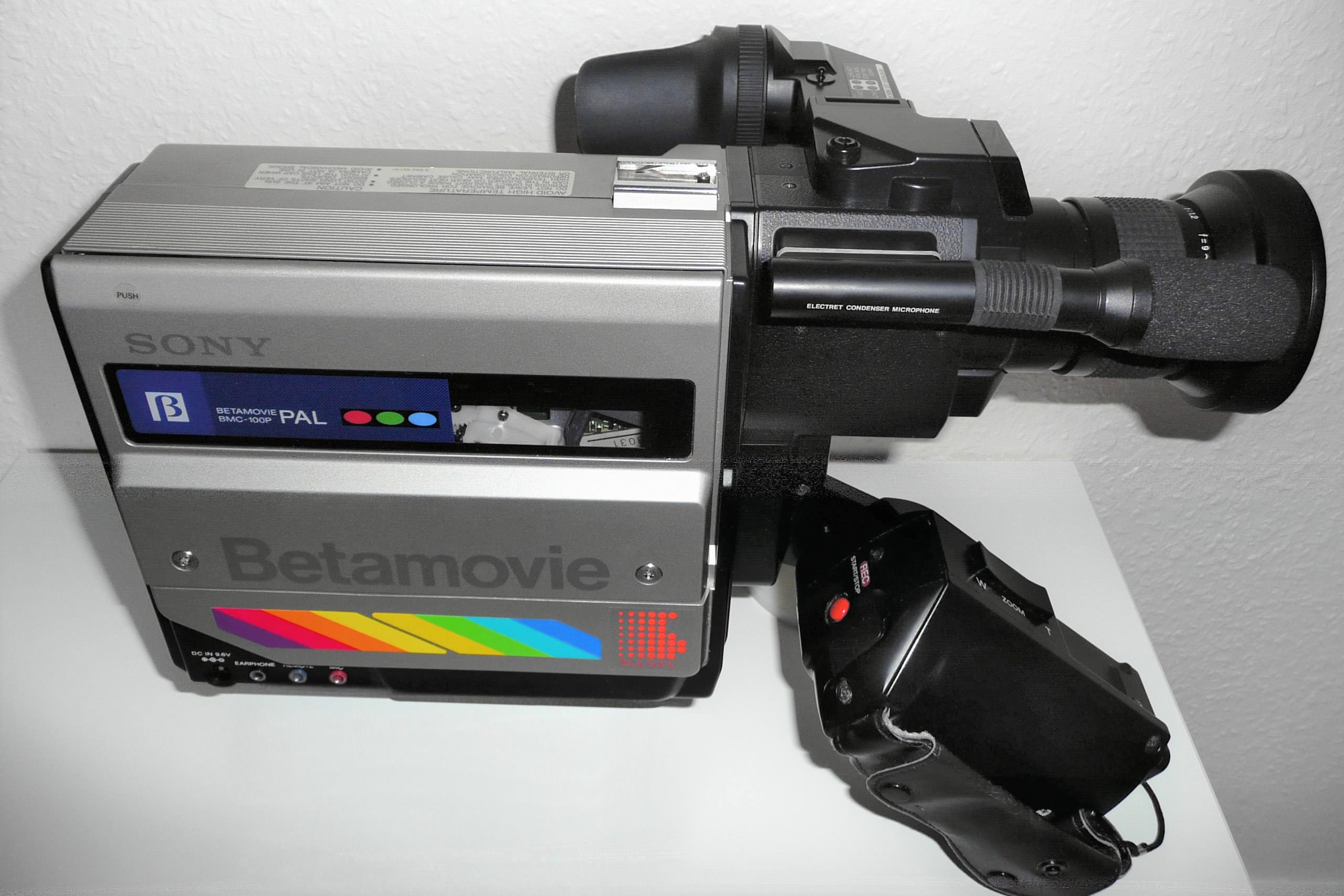
Snag Hazards And Camera Helmets
Why were camera setups so dang clunky? Tape! Cameras couldn’t be made smaller than the tape they had, and at this time we were still using VHS, which HAD to be big. We eventually transitioned to 8mm tape, and then teeny-tiny SD cards, and the size of the camera system was able to decrease.
Before the camera helmet, skydivers were using regular helmets and sort of jerry-rigging them to hold cameras. Leo Dickinson developed a camera-specific helmet that accommodated stills and video cameras. A critical innovation of this new helmet was a cutaway system! This allowed the jumper to easily detach the helmet from their head in the event of an entanglement.
Fun fact: These helmets actually had drogues (mini parachutes) attached to them, which allowed the setup to land back on the ground, undamaged. The story goes that while doing test jumps, no helmets made it back to the ground, because other jumpers would catch them while flying their parachutes around – neat! Camera helmets today have cutaway systems, but they do not have drogues.
1990s: Digital Revolution
The 90s saw the birth of the digital camera. Along with this, better mounting systems became a priority. The traditional large cameras shoddily slapped onto helmets were considered major snag hazards. Digitizing the camera system was a game changer – we went from the cathode ray tubes to silicon chips, called CCD chips. These were much smaller, sturdier, and used a lot less power.
Footage of skydives not only allowed people to relish in the excitement time and time again, but became a kingpin in teaching people how to skydive. This Parachutist Magazine article from 1991 dives into a skydiving training film for those practicing relative work – a discipline where skydivers freefall relative to one another with the goal of creating formations.
Early 2000s: High Definition
GoPro’s took off in the early 2000s. High-definition action cameras were all the rage, and for good reason. Being high-quality, compact, lightweight, and durable are all selling points. Perhaps the most innovative aspect of them for skydiving is their stabilization technology – this eliminates the shakiness of images and allows for super crispy photos and videos. These are the types of cameras videographers use today to get the best tandem skydiving photos!
Modern Day: Cutting-Edge and Endless Possibilities
Camera technology is constantly evolving and the next best thing is always on the horizon.
Do skydivers still jump with manual cameras today? Yes! Some of the best shots are taken the OG way. Skydiving photographer, Anthony Armendariz, captured the 2024 Great American Eclipse using a manual helmet-mounted camera.
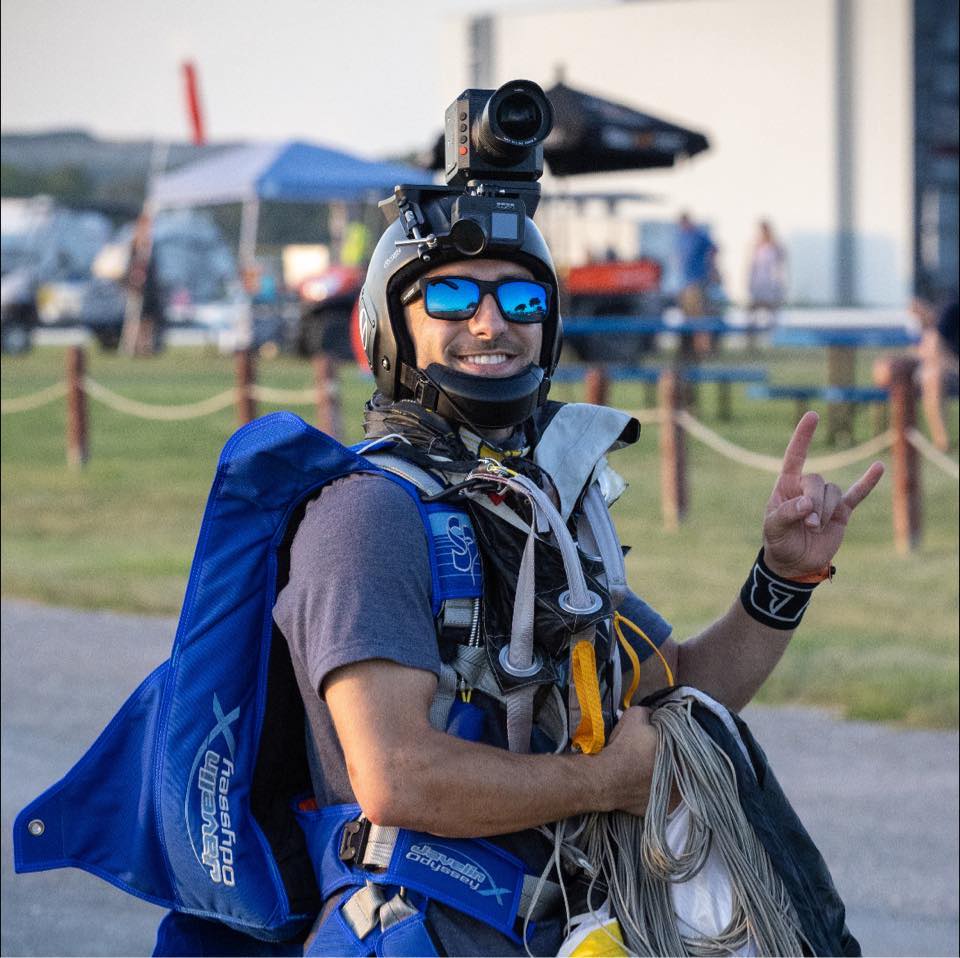
Although initially nervous to have the correct settings for the constantly-changing light of the eclipse, he trusted in his equipment and photographic instinct to capture a truly once-in-a-lifetime shot of the eclipse in totality. This feat proves that although technology has come such a long way (to which we are so thankful), some things are best done the old-school way.
When are skydivers allowed to jump with a camera? The United States Parachute Association (USPA) strongly recommends 200 jumps as a minimum – this ensures their skydiver is adept in their freefall and canopy awareness, making them less likely to be easily distracted by wearing a camera.
The first step to being a skydiving videographer is doing your first jump. Ready? Book today! Blue skies!
